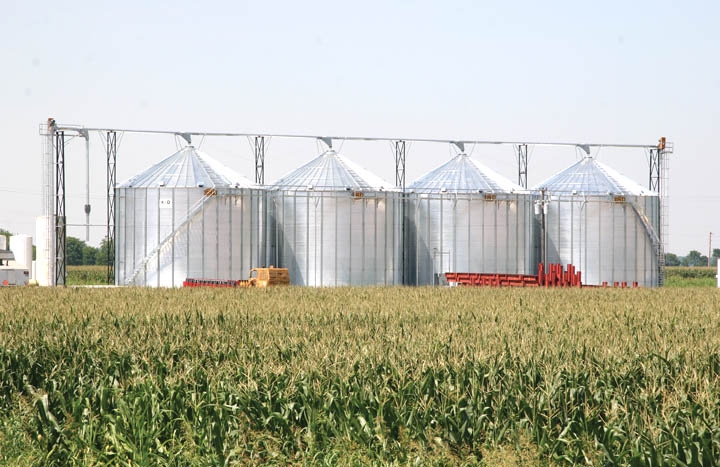
Proper grain storage sanitation practices pay off for producers
Proper grain storage sanitation can help prevent costly problems from developing for most producers."You always want to build on developing a reputation as a quality grain producer. Insects can destroy kernels, and grain quality can be jeopardized. Other problems such as dust, odor, moisture and mold are challenges producers must be aware of and overcome if those problems persist."
January 6, 2011

Proper grain storage sanitation can help prevent costly problems from developing for most producers, according to a Texas AgriLife Extension Service expert.
Dr. Roy Parker, AgriLife Extension entomologist, provided several recommendations for farmers to practice when he spoke at the Texas Plant Protection Association Conference held in Bryan recently.
"You always want to build on developing a reputation as a quality grain producer," he said. "Insects can destroy kernels, and grain quality can be jeopardized. Other problems such as dust, odor, moisture and mold are challenges producers must be aware of and overcome if those problems persist."
Parker outlined several management practices for stored grain, which included some common practices that aren’t always carried through, such as making sure combines and harvest equipment are clean and properly set.
"This reduces trash, fines and broken kernels," he said. "Harvest at a safe, low-moisture level but not so much that the grain cracks."
Parker said sanitation of grain bins begins as soon as the last truck pulls out with the last load.
"That means you start cleaning bins, augers and other equipment and facilities," he said. "You also want to make sure you have tight-fitting bins for effective fumigation. Also, treat empty bins with insecticide about two weeks before loading."
Products such as Tempo, Storcide II and silicon dioxide are effective in controlling and preventing insects as well as malathion in the empty bins, he said. Parker advises that a grain protectant such as Actellic or Actellic plus Diacon II, Storcide II or Storcide II plus Diacon II be applied to the grain as it is being loaded into bins, and be sure to check the labels for the grains specific insecticides can be used on.
Parker also advised removing grain peak and "core" round bins and applying a top-dress insecticide.
“Also, it’s advised to inspect the grain for insects and monitor temperature,” he said.
As part of insect control, phosphene gas, which comes in pellet or tablet form, can be applied by experienced grain managers or by a professional fumigator.
"It's a control option, and the cost is about 2 cents a bushel for the application if done by a professional," Parker said.
Finally, during times of anticipated bumper yields, an option for grain producers would be to store grain in large plastic bags (grain bags). Parker said these bags can serve as temporary storage until it can be sold.
These storage bags were particularly useful during harvests in 2007 and 2008 when a combined 72.71 million bushels of grain were produced in the Coastal and Upper Gulf Coast regions of Texas. Bumper grain crops can back up delivery trucks at area elevators and the grain storage bags are a short-term alternative.
The air-tight polyethylene bags won't present the insect problems like that of grain bins "because of respiration and carbon dioxide levels," Parker said.
"In fact, we've seen more rice weevils in bins where the grain was not treated with insecticide than in bags," he said. "One critical thing to note is that bags should be placed on a humped (high ground) area and not close to any place where water can collect. Choose a well-drained area."
For more information and economic analysis and use methods of grain bags, visit the Web at http://farmassistance.tamu.edu/publications/focus/2009-5pages.pdf.rn-30-.
You May Also Like



